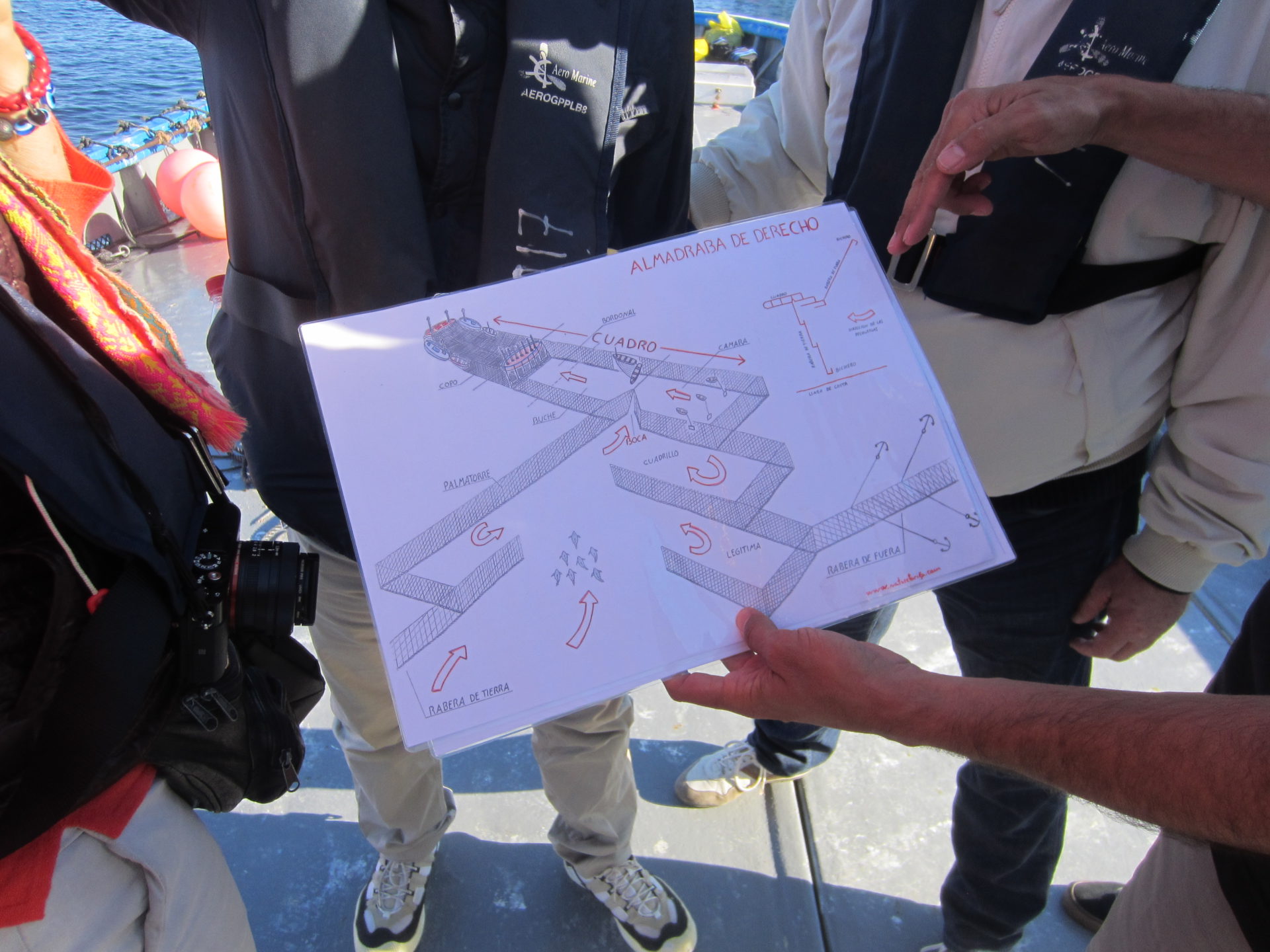
You know you are in Andalucia when you smell the comforting aromas of jasmine blossoms, drops of morning dew and freshly brewed coffee from the local cafeterías. After your early morning coffee, you wander through the streets of Barbate and reach the hustle and bustle of the town’s coastal harbor. You witness the rush of excitement and harmonious rhythm of the docks and realize that something extraordinary is about to take place.
During the month of May – after the first full moon and at the crack of dawn – just off the coast of the Atlantic, fishermen from Cádiz start casting out a web of nets known as Almadraba. Almadraba is derived from the Al-Andalus Arabic word for ‘a place to strike’, and is a 3000 year-old Phoenician technique used to catch tuna just as they cross the Atlantic Ocean to the Mediterranean. Good weather conditions and relatively calm seas are imperative in order for this ancestral ritual to fall into place, and IKON travelers will only be notified in the early hours of the morning.
The Almadraba is considered a major social and gastronomic event and is an essential tradition as it provides seasonal work for fisherman, packing factories and restaurants along the coast where they serve delicious tapas and dishes curated around this delicacy.
Fitted with warm, waterproof clothing and a high expectation; you set out on a speedboat and get whisked off towards the open ocean where fishing boats are lined up in a circle, ready for the passing of the tuna.
Fishing nets are casted out where the tuna migrates towards warmer waters (the Mediterranean). The tuna’s fat reserves to keep warm, prolongs its energy and it’s at this point when the tuna are the most rich in taste and texture. Almadraba is a sustainable fishing technique – only the larger fish are chosen while the rest are returned into the ocean and the fishermen adhere to a very strict quota.
On the boat, your eyes are fixed upon the ocean and nets, and fishermen and divers alike wait for the show to begin. Fishing boats are lined in a circle and a multitude of fish swim in and through the nets until some are caught in the center, the nets are then raised (levantá) up, the bigger fish are selected and the nets are lowered (bajá) back into the sea.
Once back at the harbor, the tuna are taken to different booths and the filleting begins. The sound of the filleting is best described similar to the sound of snoring (el ronqueo), and this paired with seeing dozens of restaurateurs gathering for the best part of the fish is a highlight on this part of the tour.
You will work up an appetite by seeing the Almadraba in action and now will be the perfect time to sit, relax and taste this Spanish delicacy. The best way to savor this delicacy is by eating it as a tuna tartare and will be more appreciated. If raw fish is not your thing then trying it grilled, Adobo (marinade), or seared will taste equally as good. Pair it with a Spanish Sherry and you will perfectly round off your Almadraba experience.
Visit our IKON website: Destination_Andalucia, or get in touch with our Spanish travel experts to experience this authentic tradition and be immersed within the Andalusian landscape.
Written by Maria Ferrera, Marketing & Client Relations at IKON